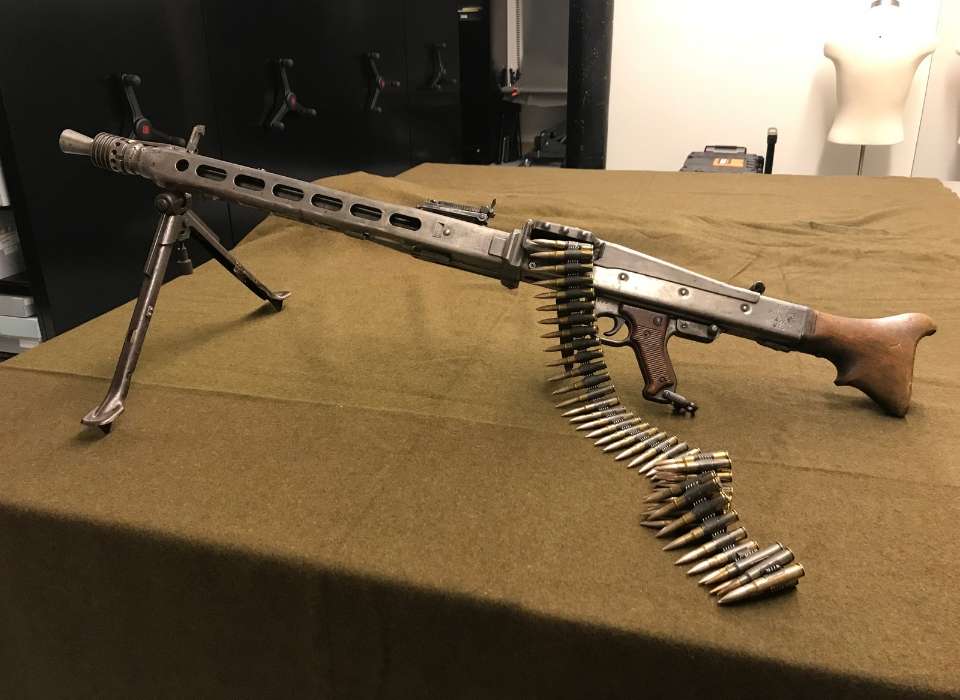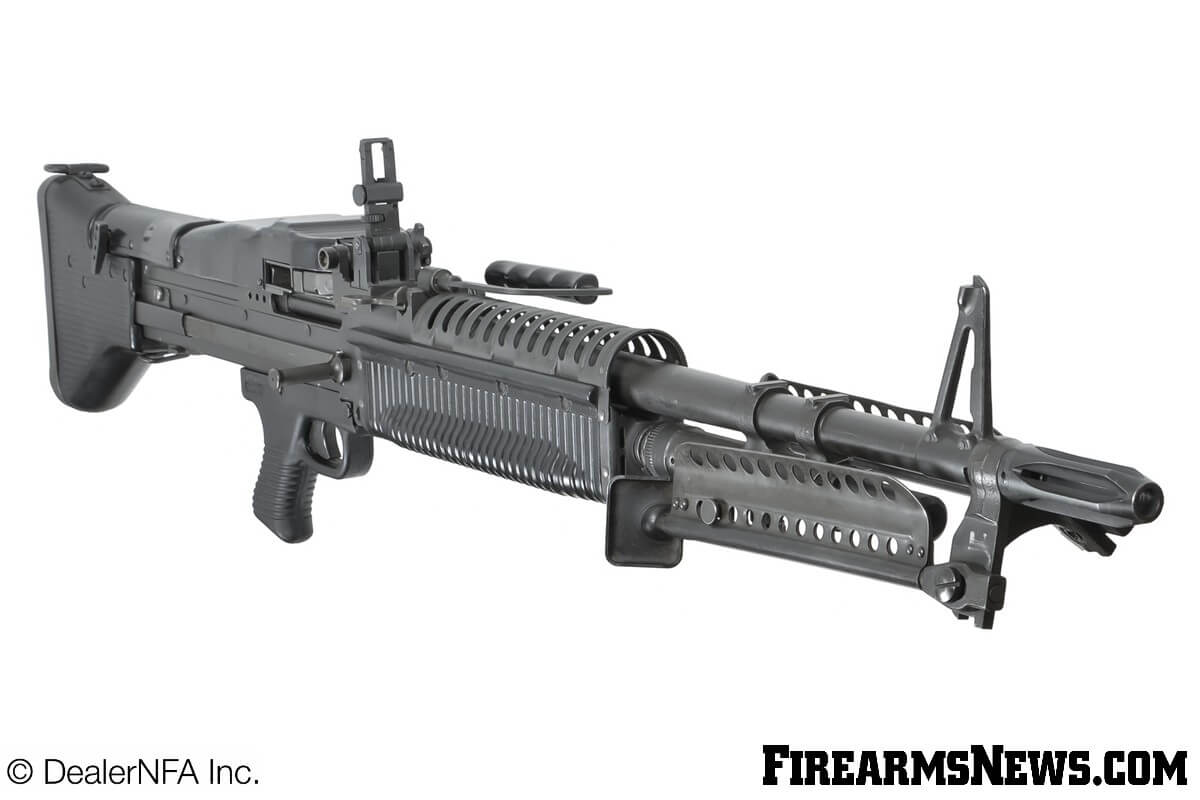Depending on the gunner and conditions, a barrel modification might be required as frequently as every 200 to 250 rounds. When the hot barrel was removed, it was set aside till it was cool enough to use again. Machine-gun groups would have as many as 6 spare barrels on hand.
Driving through a recently protected area in Belgium, the observant Liniewski identified the abandoned weapon in a field. Liniewski then did what any not being watched GI would have done in that position; he stopped his truck and seized the chance to snag a fantastic keepsake for the folks back house. As an assistance soldier, Liniewski was not familiar enough with weapons to disassemble his MG-42, so he hung on to it for a while till he found a camp where German prisoners of war were being held.
The weapon remained in the Liniewski household till 2016 when his child Marty donated the weapon to the Museum. In spite of its propensity to get too hot, the MG-42 was an excellent weapon that was light-years of ahead of the United States equivalent, the Browning M-1919A4 device weapon. Germany produced roughly 400,000 MG-42s during the war, some of which are still in active duty.

Taken together, all these weapons provided the Red Army a more useful series of assistance weapons, better able to challenge the Germans for fire supremacy on the battlefield. Totally detailed, this study describes the technology and the tactics of these maker guns. Kept in mind authority Chris Mc, Nab sets out how these machine weapons were distributed and tactically used and provides various examples of the weapons in action, from assault teams on the streets of Stalingrad to tank teams struggling for survival at Kursk.
Weapons Used By The Australian Army In World War I - Truths
Illustrated with high-quality photographs and specifically commissioned artwork, this is a deep analysis of these necessary tools of warfare within the Soviet forces.
Taken together, all these weapons provided the Red Army a more practical variety of assistance weapons, better able to challenge the Germans for fire superiority on the battleground. Completely illustrated, this research study discusses the innovation and the methods of these device guns. Kept in mind authority Chris Mc, Nab sets out how these device guns were dispersed and tactically applied and provides various examples of the weapons in action, from assault teams on the streets of Stalingrad to tank teams having a hard time for survival at Kursk.
Illustrated with premium photos and specially commissioned art work, this is a deep analysis of these important tools of warfare within the Soviet forces.
The machine weapon business, commanded by a captain, had an assigned strength of 6 commissioned officers and 172 gotten guys, and brought 16 guns, four of which were spares. Within the business there were three squads and a head office section. A very first lieutenant led the first army, while 2nd lieutenants led armies 2 and 3.
Some Ideas on How The Machine Gun Revolutionized World War 1 Combat You Need To Know


Within each area were 2 weapon squads, each with one gun and nine guys, led by corporals. The gun team had one fight cart, pulled by a mule, to carry its weapon and ammunition as close to the shooting position as opponent fire permitted. From there the teams moved the weapons and ammunition forward by hand.
The battalion had a strength of 16 officers and 377 employed guys and was motorized. It had only two companies, identical to the other machine gun companies in terms of personnel and weapons. Each gun squad utilized an unique motor car to transport its personnel, weapon and equipment. The battalion was generally in division reserve, ready to perform missions as the department leader bought.
In this role the weapons were positioned 300 to 1000 meters to the back of the cutting edge. When they utilized their guns in that style, the maker weapon officers typically faced opposition from the rifle company commanders, who preferred to have the weapons further forward, fearing that their infantrymen would be at danger of stray low rounds as they advanced under the overhead machine gun fire.
Furthermore, they quickly found that the gatling gun were high priority targets for opponent fire, which it was beneficial to have the guns at some range from the infantry positions. Because enemy gatling gun positioned the best hazard to the assaulting troops, the maker weapon crews strove to find the enemy weapons and to concentrate their fire upon them.
Examine This Report on Russian Machine Guns Of World War I
A proportion of the guns was kept back as a reserve under command of the maker gun officer. 6Machine gun tactical teaching determined that in the defense the Hotchkiss guns ought to just hardly ever lie within 100 lawns of the cutting edge which a minimum of two-thirds of the guns should be echeloned back through the entire protective position, situated so that adjacent guns would be mutually supporting.

7 To find other functions on the go to our THE DOUGHBOY CENTER wants to constantly expand this function. Additions and talk about these pages might be directed to:.
I was impaled on this. My only worry was that he would press the trigger which would have made a hell of a mess. In the meantime, my sergeant who was near he saw me; can be found in close; shot the fellow and then raised me, with the assistance of another man, off the bayonet.
He was dead and it wasn't enjoyable. A bayonet wound straight it enters it hurts and the withdrawal is most likely further suffering than the 'putting in' since the 'putting in' is rapid. Another type of weapon was the trench club. These might be utilized on trench raids and in close quarter fighting.
Comments on “The Basic Principles Of Ww1 Machine Gun Vs Propeller”